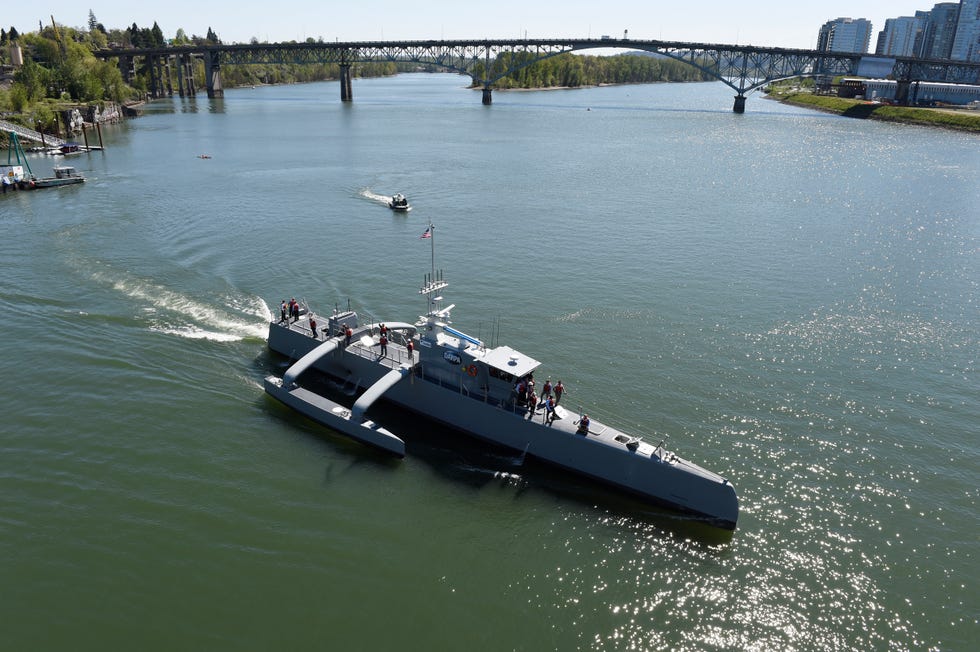The day in which unmanned “ghost ships” ply the seas laden with cargo is fast approaching. But don’t expect the drone vessels to be flying a U.S. flag.A couple previous posts:
The United States is not among the global hotspots where a revolution in autonomous commercial shipping is unfolding. One needs to look to places like Norway, Finland, Singapore and China to observe the competition for unmanned shipping.
A shipyard in Norway will soon begin building a 237-foot battery-powered electric container ship that will operate with nary a sailor aboard by 2020.
Announcement of that project and several others over the past year have rippled through maritime circles worldwide.
Finland is looking at prototypes for an autonomous ferry. China has set aside a 225-square-mile ocean area to test crewless ships. And Japanese shipping lines have formed a consortium with the goal of having 250 remote-control cargo ships by 2025.
“It’s kind of a space race,” said Sean T. Pribyl, a maritime attorney with the Washington firm Blank Rome. “It was a total surprise for everyone in the industry.”
U.S. shipping firms are not even in the game.
“We, the U.S., are behind,” said Deputy Administrator Richard Balzano of the U.S. Maritime Administration, the arm of the Transportation department that deals with shipping. American commercial shipping firms are “on life support.”
“Our fleets are aging out. We’re not globally competitive like, say, the Chinese. Our tax systems, our standards of living, our pay rates, our union labor costs, these things all drive us to be less than competitive,” Balzano said.
Battered by foreign competition, U.S. shipping lines run a total of 81 ocean-going vessels that conduct international trade, the lowest number in modern times, Balzano said.
Other factors that have hindered the commercial shipping industry’s move toward autonomy include a lack of designated open-water areas to conduct testing, sea lanes that are heavily transited, and regulatory obstacles.
The U.S. isn’t losing the race because a lack of technological know-how. In fact, U.S. technology in autonomous systems is world beating – but it’s largely confined to the military. Earlier this year, the Navy took control of a 132-foot sensor-rich unmanned vessel, dubbed Sea Hunter, that can remain away from port for months at a time. Other anti-submarine robot ships are on order.
Pribyl estimated that U.S. commercial shipping interests lag at least five years behind some of their foreign counterparts in moving toward crewless commercial vessels....MUCH MORE
"World’s First Autonomous Shipping Company Established in Norway"
Autonomy: "Rolls-Royce’s cargo ship of the future requires no onboard crew"
And the Americans are not totally oblivious:
The U.S. Navy Just Took Delivery of the World’s Largest Roboship
